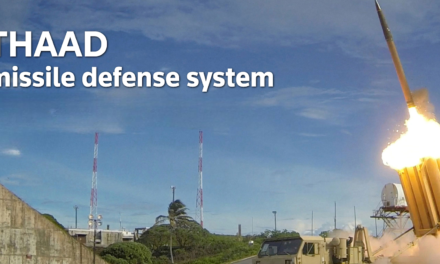CubeSats are a class of small satellites with standardized dimensions and modular designs, making them cost-effective, versatile, and accessible for a wide range of applications. They are revolutionizing satellite technology by enabling rapid development, deployment, and innovation across industries. Here’s a detailed overview:
1. What Are CubeSats?
- Definition: CubeSats are small satellites based on a standardized unit (U) measuring 10x10x10 cm and weighing around 1-1.5 kg per unit.
- Scalability: CubeSats can be built in multiples of this unit, such as 1U, 2U, 3U, or even larger configurations like 6U and 12U, depending on mission requirements.
- Origins: Developed in 1999 by California Polytechnic State University and Stanford University to create a low-cost platform for educational and scientific purposes.
2. Key Features of CubeSats
- Cost-Effective: Lower manufacturing and launch costs compared to traditional satellites.
- Modular Design: Standardized dimensions allow for easy integration of off-the-shelf components.
- Lightweight: Small mass reduces launch costs and makes CubeSats suitable for rideshare missions.
- Rapid Development: Can be developed and launched in months rather than years.
3. Applications of CubeSats
A. Earth Observation
- Monitoring natural disasters, deforestation, agriculture, urbanization, and climate change.
- Example: Planet Labs’ CubeSat constellation provides daily Earth imagery for various industries.
B. Scientific Research
- Conducting experiments in microgravity, testing new technologies, and studying space environments.
- Example: NASA’s BioSentinel CubeSat investigates the impact of radiation on biological samples.
C. Communication
- Expanding connectivity, especially in remote or underserved regions, and supporting Internet of Things (IoT) networks.
- Example: Swarm Technologies deploys CubeSats for global IoT data services.
D. Technology Demonstration
- Testing new materials, propulsion systems, and sensors in space before scaling up to larger missions.
- Example: The Mars Cube One (MarCO) CubeSats supported NASA’s InSight mission by relaying data from Mars.
E. Military and Security
- Surveillance, reconnaissance, and secure communications.
- Example: CubeSats are used by defense agencies for tactical imaging and signal intelligence.
F. Space Exploration
- Enabling interplanetary missions at a fraction of the cost of traditional spacecraft.
- Example: NASA’s Lunar Flashlight CubeSat is designed to search for water ice on the Moon.
4. Advantages of CubeSats
- Lower Costs:
- Manufacturing costs range from a few thousand to several hundred thousand dollars, compared to millions for traditional satellites.
- Shorter Development Cycles:
- Accelerated timelines enable faster testing and deployment of new technologies.
- Increased Accessibility:
- Affordable for universities, small businesses, and emerging space nations.
- Rideshare Opportunities:
- CubeSats can be launched as secondary payloads alongside larger missions, reducing launch expenses.
- Flexibility:
- Modular designs allow CubeSats to be tailored for specific missions.
5. Challenges of CubeSats
- Limited Power and Space:
- Constrained size and weight limit payload capacity, onboard power, and data processing.
- Short Lifespan:
- Typically operate for 1-3 years due to limited shielding and fuel.
- Orbital Debris:
- Proliferation of CubeSats increases concerns about space debris and collision risks.
- Communication Limitations:
- Smaller antennas result in lower data transmission rates.
6. How CubeSats Are Revolutionizing Small Satellite Technology
A. Democratization of Space
- CubeSats have lowered entry barriers, enabling universities, startups, and developing countries to participate in space exploration and applications.
B. Enabling Constellations
- CubeSat constellations, such as those by Planet Labs and Spire Global, provide continuous global coverage for Earth observation, weather forecasting, and communications.
C. Rideshare Opportunities
- CubeSats can hitch rides with larger payloads, making space access more cost-efficient and frequent.
D. Advancing Technology
- Innovations in miniaturized sensors, propulsion systems, and AI have expanded CubeSat capabilities to rival larger satellites for specific tasks.
E. Inspiring Innovation
- Rapid iteration cycles encourage experimentation with new technologies and concepts.
F. Support for Mega-Projects
- CubeSats complement larger missions, such as relaying data or providing redundancy.
7. Future Trends in CubeSat Technology
- Advanced Propulsion:
- Incorporation of electric and chemical propulsion systems for better maneuverability and extended lifespans.
- AI and Autonomy:
- Onboard AI for autonomous operations, data processing, and decision-making in real-time.
- Inter-Satellite Communication:
- Laser communication links for high-speed data transfer within constellations.
- Sustainability:
- De-orbiting mechanisms to mitigate space debris and ensure sustainable operations.
- Deep Space Applications:
- Expanding CubeSat missions to the Moon, Mars, and beyond.
8. Examples of CubeSat Missions
- Planet Labs: Operates the largest constellation of Earth observation CubeSats, delivering high-resolution imagery.
- Mars Cube One (MarCO): Demonstrated CubeSat capabilities for interplanetary communication during NASA’s InSight mission.
- Lunar IceCube: Aims to map water distribution on the Moon.
- Spire Global: Provides weather data, ship tracking, and aviation monitoring using CubeSats.
Conclusion
CubeSats are revolutionizing small satellite technology by making space exploration and utilization more affordable, accessible, and versatile. With their potential to support a wide range of applications, from Earth observation to interplanetary exploration, CubeSats are transforming how humanity leverages space for scientific, commercial, and defense purposes.
Hashtags
#CubeSats #SmallSatellites #CubeSatInnovation #MiniSatTech #CubeSatRevolution #TechnologicalAdvancements #NextGenCubeSats #SmartSatelliteTech #AdvancedSmallSatellites #MiniatureSatelliteInnovation #SmallSatTechTrends #AffordableSpaceTech #CostEffectiveSatellites #LowCostCubeSats #SpaceAccessibility #CubeSatMissions #EarthObservationSatellites #ScientificCubeSats #CubeSatsForExploration #SmallSatApplications #CubeSatCommunication #SmallSatComms #GlobalConnectivityWithCubeSats #ClimateCubeSats #EnvironmentalMonitoringSatellites













